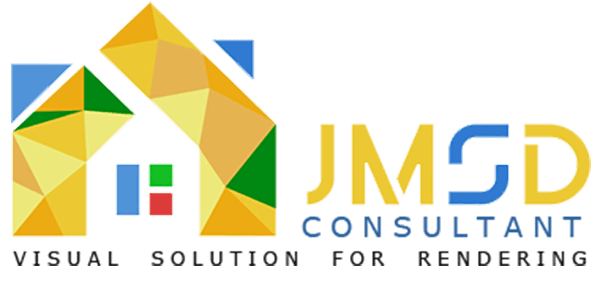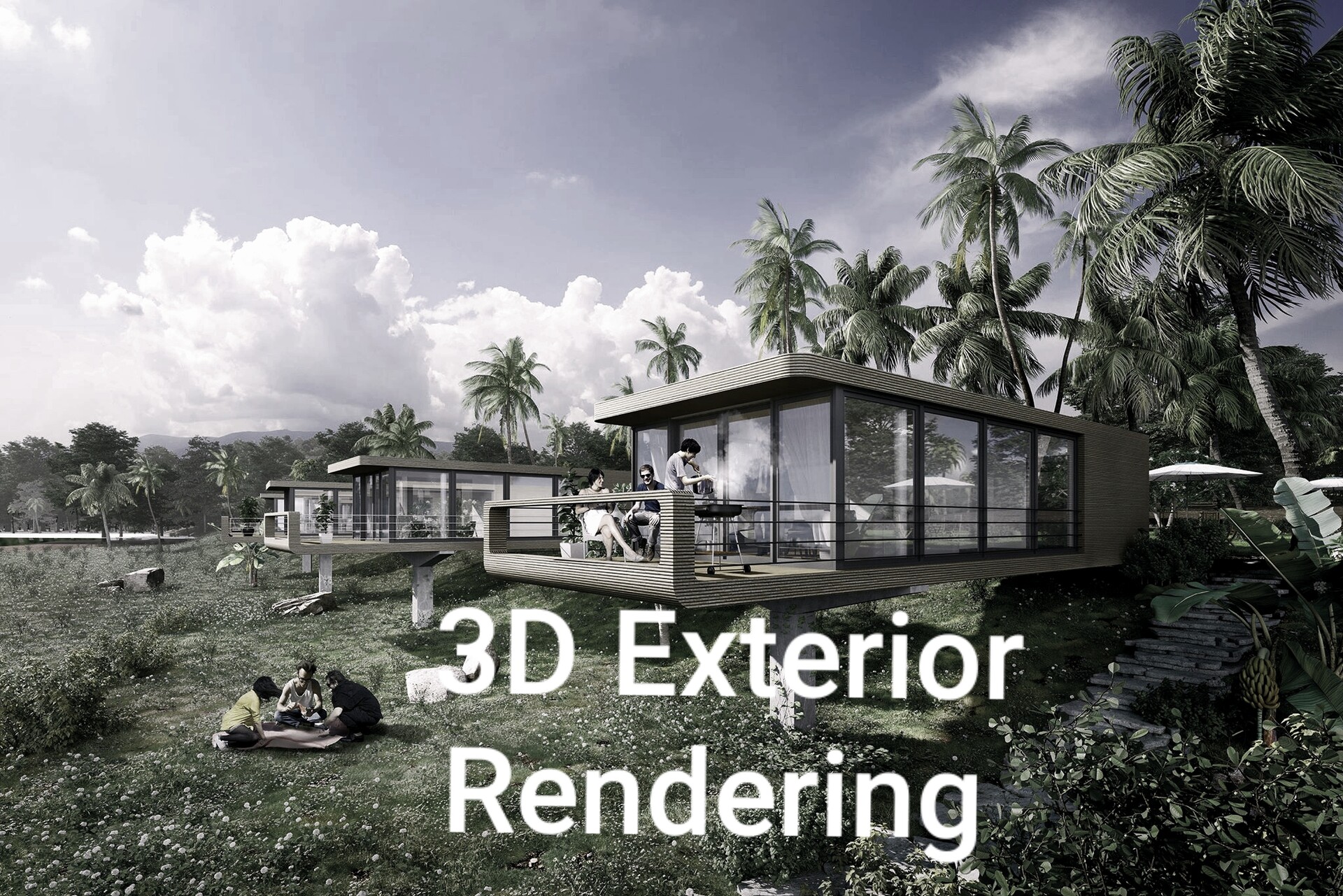3D Rendering in the AEC Industry: Why the Popularity of Architectural CGI Will Only Grow?
The popularity of 3D rendering and architectural CGI (Computer-Generated Imagery) in the AEC (Architecture, Engineering, and Construction) industry is growing for several reasons, and this trend is likely to continue in the future.
3D Rendering in the AEC Industry Grow? it is already widely used, and will only see increasing demand. Wondering why? Let’s find out!

The fast-paced industry of architecture and construction (AEC) is always ready to adopt new technologies. One such technology is CGI. It manages all project phases from initial concept to pre-sales and marketing. Its popularity is rapidly increasing in the future where CGI will become an important part of architecture. 3D imaging in the AEC industry is a significant part of the overall CGI market and is expected to grow rapidly in the next decade.
First of all, 3D visualization offers compelling benefits to the AEC industry. But it has much more to offer. Our 3D Visualization Studio has seen the spread of CGI into the world of architecture and building before. We can guarantee that demand will continue to grow. Why? Let’s see!
Here are some key factors driving 3D Rendering in the AEC Industry growth:
#1. Improved Communication & Visualization :
- Realistic Visualization: Architectural CGI allows stakeholders to visualize buildings and spaces with incredible realism before construction begins. This helps bridge the gap between design intent and client expectations.
- Clear Communication: 3D renderings provide a common ground for communication between architects, engineers, clients, and contractors. They make complex designs easier to understand, reducing misunderstandings and misinterpretations.
#2. Enhanced Client Engagement :
- Immersive Experiences: With technologies like virtual reality (VR) and augmented reality (AR) becoming more integrated with 3D rendering, clients can “walk through” spaces and experience designs in an interactive, immersive way. This creates emotional engagement and builds confidence in design decisions.
- Marketing & Sales Tools: Architectural CGI is an invaluable tool for marketing, whether it’s for pre-selling properties or attracting investors.
- Highly detailed and visually appealing renderings can make a project stand out and drive decision-making. In the next stage, 3D visualization enhances the work with tangible results. These can be used on maps, websites and social media. The best 3D images can attract the attention of potential buyers or investors, giving them a positive perspective on the construction.
#3. Design Flexibility & Iteration :
- Rapid Prototyping: CGI allows architects and designers to quickly iterate on designs. Changes to materials, lighting, or layouts can be made and visualized almost instantly, helping architects and clients explore multiple design options without delaying the project.
- Real-time Adjustments: 3D rendering software can integrate real-time rendering capabilities, allowing for instant feedback and modifications during design presentations. This speeds up the decision-making process.
#4. Cost and Time Efficiency :
- Reduced Rework: By visualizing and addressing potential design issues early in the process, 3D rendering reduces costly changes during construction.
- Accurate Material Simulation: Architectural CGI can simulate materials and lighting conditions with high accuracy, helping to plan and budget more effectively. This leads to more informed decisions about materials, reducing wastage and cost overruns.
#5. Integration with BIM (Building Information Modeling) :
- Enhanced Collaboration: Architectural 3D renderings integrate seamlessly with BIM, which is becoming standard in the AEC industry. This integration enhances coordination between various teams—architects, engineers, and contractors—by providing a detailed and consistent visual reference.
- Data-Driven Insights: CGI can visualize BIM data, such as energy efficiency simulations, structural details, and material properties, helping to improve the overall performance of the building.
- Finally, CGI can complement information design technology by adding rich, detailed information to data-centric BIM models.
#6. Globalization and Remote Collaboration :
- Remote Work Capabilities: With the increasing globalization of the AEC industry, teams often collaborate across geographies. 3D renderings, virtual walkthroughs, and cloud-based platforms enable seamless collaboration, allowing stakeholders to review and provide feedback from anywhere.
- Cross-Disciplinary Communication: CGI enhances communication between different disciplines in the AEC industry, ensuring all project participants share a unified vision, regardless of their physical location.
#7. Sustainability and Eco-Friendly Design :
- Sustainable Design Proposals: 3D rendering allows for detailed simulations of lighting, energy consumption, and other environmental factors. This helps architects design more sustainable and eco-friendly buildings by visualizing how various design choices impact energy use, solar exposure, and ventilation.
- Material Optimization: By modeling the impact of material choices, architectural CGI helps in selecting eco-friendly materials that not only look good but also perform well from a sustainability perspective.
#8. Competitive Advantage for Firms :
- Innovation and Differentiation: Firms that adopt 3D rendering technology can offer innovative solutions and differentiate themselves from competitors. This technology is becoming a must-have for firms that want to stay competitive in an increasingly digitalized industry.
- Enhanced Client Trust: The ability to show clients a highly realistic representation of the final project increases trust and satisfaction, making it easier to secure projects and client approvals.
#9. Future Technologies: AI and Machine Learning :
- AI Integration: The integration of AI in architectural CGI is enhancing rendering workflows by automating repetitive tasks, improving design accuracy, and generating optimized layouts based on performance criteria. This will further speed up the design process.
- Procedural Generation and Automation: Machine learning algorithms can automatically generate multiple design variations, which can be visualized in real-time, giving architects more creative freedom and efficiency.
Main key benefits of 3D rendering in the AEC industry? Let’s see.
- First, design accuracy is improved because 3D rendering can create realistic images. It also provides the flexibility to experiment with materials, lighting, and configurations without physical limitations or additional costs.
- Next up is better customer communication and interaction. 3D renderings allow users to see and understand the end result of a project. This leads to better feedback and collaboration.
- 3D rendering is essential for commercial real estate. It allows people to create incredible presentations, publish videos, send guides, and take virtual tours. They attract buyers and investors.
- CG visualization helps detect and correct design errors before they occur in construction. This way, you can save time and money.
- Therefore, 3D rendering simplifies the visualization process. It enables faster editing and decision-making, resulting in faster delivery.
Therefore, AEC industry professionals can simplify their 3D rendering jobs, whether they are just starting out or have completed the final project.
Conclusion :
The Trends of 3D visualization in the AEC industry will grow exponentially. This tool optimizes both creativity and design and construction ideas. 3D rendering helps in every step from developing functionality to visual presentation.
As technology continues to evolve, the popularity of 3D rendering in the AEC industry will only grow. With its ability to create highly realistic visualizations, reduce project risks, enhance client engagement, and improve communication between all stakeholders, CGI has become an indispensable tool. The integration of future technologies such as VR, AR, and AI will continue to push the boundaries of what’s possible, driving even further adoption and innovation in the industry.
Looking for a 3D rendering services partner? Contact us at JS Engineering Studio or Get in touch email us at [email protected] to see for yourself how CG technology can improve your work!





